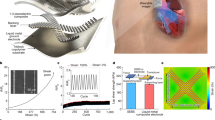Abstract
The most ubiquitous tool utilized at the point-of-care within clinic for the evaluation of Peripheral Arterial Disease (PAD) or limb perfusion is the hand-held doppler. Providers interpret audible circulatory sounds in order to predict waveform phasicity as Monophasic (severe disease), Biphasic (moderate disease), or Triphasic (normal). This prediction is highly subjective. With any doubt in interpretation, patients are referred to an ultrasound laboratory for formal evaluation which can delay definitive diagnosis and treatment. This paper proposes a novel deep learning system integrated within a hardware doppler platform for low-cost, fast, and accessible assessment of disease at the point-of-care. The system converts input sound into a spectrogram and classifies waveform phasicity with a neural network through learned visual temporal amplitude patterns. The hardware system consists of a low-cost single board computer and simple peripherals including a microphone and LCD display. The final system received a validation accuracy of 96.23%, an F1 score of 90.57%, and was additionally tested within a manually simulated clinical environment with interference in which it received an accuracy of 91.66%. Such a tool can be used to more objectively and efficiently diagnose PAD at the point-of-care and prevent delays in intervention.
Access this chapter
Tax calculation will be finalised at checkout
Purchases are for personal use only
Similar content being viewed by others
References
Nvidia tesla p100: The most advanced data center accelerator. https://www.nvidia.com/en-us/data-center/tesla-p100/
Peripheral arterial disease (pad) (September 2020). https://www.cdc.gov/heartdisease/PAD.htm
Abadi, M., et al.: Tensorflow: a system for large-scale machine learning. In: 12th \(\{\)USENIX\(\}\) Symposium on Operating systems Design and Implementation (\(\{\)OSDI\(\}\) 16), pp. 265–283 (2016)
Aboyans, V., et al.: Measurement and interpretation of the ankle-brachial index: a scientific statement from the American heart association. Circulation 126(24), 2890–2909 (2012)
Bisong, E.: Google colaboratory. In: Building Machine Learning and Deep Learning Models on Google Cloud Platform, pp. 59–64. Apress, Berkeley, CA (2019). https://doi.org/10.1007/978-1-4842-4470-8_7
Brach, J.S., et al.: Incident physical disability in people with lower extremity peripheral arterial disease: the role of cardiovascular disease. J. Am. Geriatr. Soc. 56(6), 1037–1044 (2008)
Criqui, M.H.: Peripheral arterial disease-epidemiological aspects. Vasc. Med. 6(1_suppl), 3–7 (2001)
Criqui, M.H., et al.: Mortality over a period of 10 years in patients with peripheral arterial disease. N. Engl. J. Med. 326(6), 381–386 (1992)
Hirsch, A.T., et al.: Peripheral arterial disease detection, awareness, and treatment in primary care. JAMA 286(11), 1317–1324 (2001)
Hunter, J.D.: Matplotlib: a 2d graphics environment. IEEE Ann. Hist. Comput. 9(03), 90–95 (2007)
Krizhevsky, A., Sutskever, I., Hinton, G.E.: Imagenet classification with deep convolutional neural networks. Adv. Neural. Inf. Process. Syst. 25, 1097–1105 (2012)
LeCun, Y., Bengio, Y., Hinton, G.: Deep learning. Nature 521(7553), 436–444 (2015)
Lee, J.G., et al.: Deep learning in medical imaging: general overview. Korean J. Radiol. 18(4), 570 (2017)
McFee, B., et al.: Librosa: audio and music signal analysis in python. In: Proceedings of the 14th Python in Science Conference, vol. 8, pp. 18–25. Citeseer (2015)
Ouriel, K.: Peripheral arterial disease. Lancet 358(9289), 1257–1264 (2001)
Pi, R.: Raspberry pi 3 model b (2015) . https://www.raspberrypi.org
Rao, A.: Waveform phasicity prediction from arterial sounds through spectrogram analysis using convolutional neural networks for limb perfusion assessment. arXiv preprint arXiv:2104.09748 (2021)
Scissons, R.: Characterizing triphasic, biphasic, and monophasic doppler waveforms: should a simple task be so difficult? J. Diagn. Med. Sonogr. 24(5), 269–276 (2008)
Selesnick, I.W., Burrus, C.S.: Generalized digital butterworth filter design. IEEE Trans. Signal Process. 46(6), 1688–1694 (1998)
Selvaraju, R.R., Cogswell, M., Das, A., Vedantam, R., Parikh, D., Batra, D.: Grad-cam: visual explanations from deep networks via gradient-based localization. In: Proceedings of the IEEE International Conference on Computer Vision, pp. 618–626 (2017)
Szegedy, C., Vanhoucke, V., Ioffe, S., Shlens, J., Wojna, Z.: Rethinking the inception architecture for computer vision. In: Proceedings of the IEEE Conference on Computer Vision and Pattern Recognition, pp. 2818–2826 (2016)
Tehan, P.E., Chuter, V.H.: Use of hand-held doppler ultrasound examination by podiatrists: a reliability study. J. Foot Ankle Res. 8(1), 1–7 (2015)
Torrey, L., Shavlik, J.: Transfer learning. In: Handbook of Research on Machine Learning Applications and Trends: Algorithms, Methods, and Techniques, pp. 242–264. IGI global (2010)
Virtanen, P., et al.: Scipy 1.0: fundamental algorithms for scientific computing in python. Nat. Methods 17(3), 261–272 (2020)
Author information
Authors and Affiliations
Editor information
Editors and Affiliations
Rights and permissions
Copyright information
© 2021 Springer Nature Switzerland AG
About this paper
Cite this paper
Rao, A., Chaudhari, A., Aalami, O. (2021). Development of the Next Generation Hand-Held Doppler with Waveform Phasicity Predictive Capabilities Using Deep Learning. In: Oyarzun Laura, C., et al. Clinical Image-Based Procedures, Distributed and Collaborative Learning, Artificial Intelligence for Combating COVID-19 and Secure and Privacy-Preserving Machine Learning. DCL PPML LL-COVID19 CLIP 2021 2021 2021 2021. Lecture Notes in Computer Science(), vol 12969. Springer, Cham. https://doi.org/10.1007/978-3-030-90874-4_6
Download citation
DOI: https://doi.org/10.1007/978-3-030-90874-4_6
Published:
Publisher Name: Springer, Cham
Print ISBN: 978-3-030-90873-7
Online ISBN: 978-3-030-90874-4
eBook Packages: Computer ScienceComputer Science (R0)





